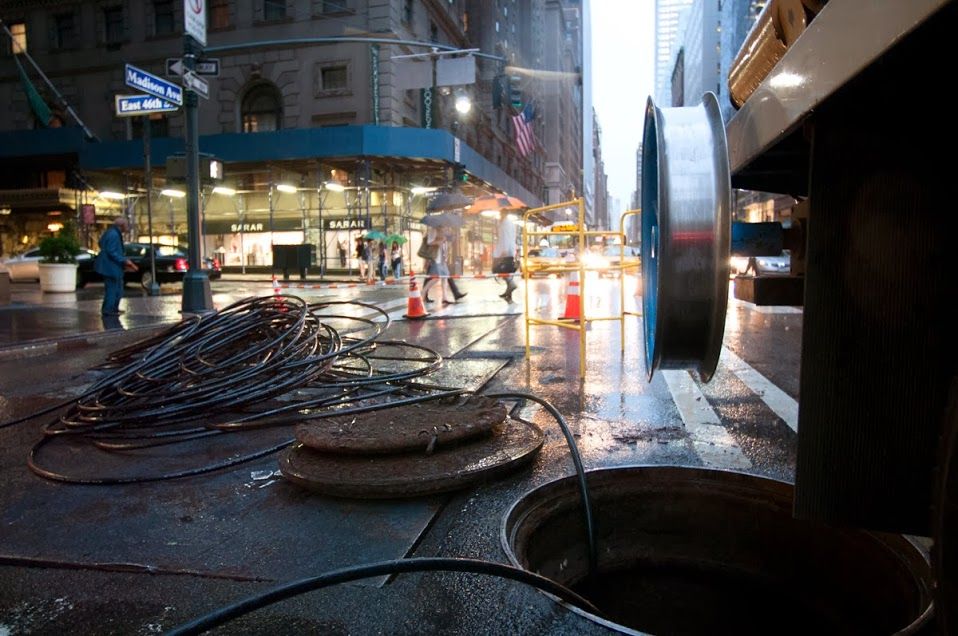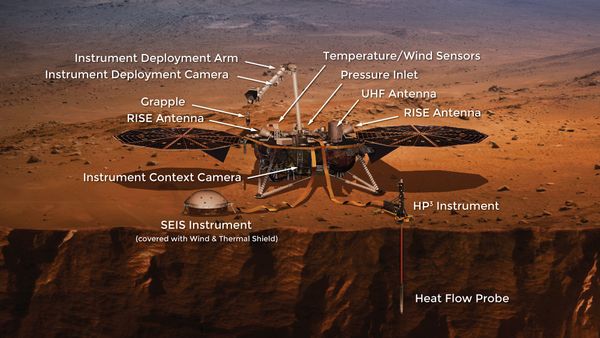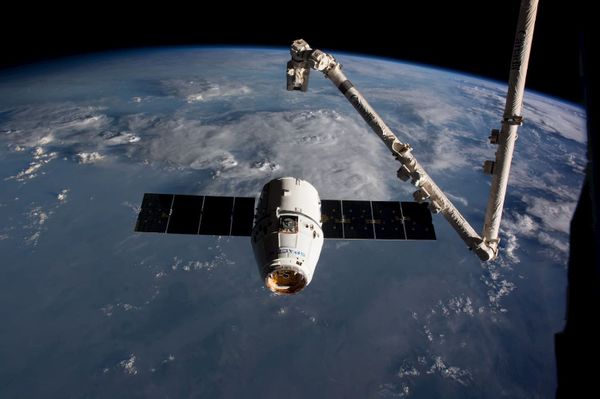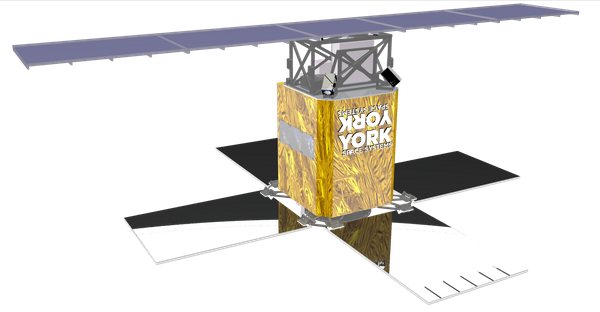SpaceX's Starlink constellation claims to serve low-latency, high-bandwidth internet access to anyone in the United States with a Starlink base station. In New York, another company has a head start connecting businesses with high-speed internet. Shrihari Pandit is the CEO of Stealth Communications. His company serves gigabit internet to NYC over their own fiber optic network.
On this episode, Shrihari takes us through the ins and outs of how LEO constellations like Starlink and Project Kuiper will play a role in delivering high speed internet to people across the globe.

SPEXcast: Starlink promises low-latency, high-bandwidth internet access. What is internet latency and where does it come from?
Shrihari Pandit: Latency, in essence, is the cumulative delay of sending data from your computer to a website and back. Every time your data has to go from router to router, that adds delay. But another thing that adds latency is the length of transmission from one router to another. There's a certain amount of latency even through fiber due to the speed of light in glass, and with copper it can be much higher. With Starlink, they're routing this data through air [and space] so they can actually run technically faster than fiber.
For businesses, latency is really important. People usually think of trade and arbitrage at first, but low latency is also very important for day-to-day activity. For example, a lot of businesses no longer have traditional telephone lines, it's all Voice Over IP. And today we're having this Zoom call. Low latency allows us to have this near-realtime communications. If there was even a half a second delay it would be very uncomfortable to have this conversation.
Satellite mega-constellations and terrestrial fiber optic networks are very different. What challenges does Stealth face?
In order to run fiber efficiently, we need to use conduits that already exist. If we have to trench the roadway it can cost hundreds of dollars per foot to lay that cable. Not only that, but it can take weeks, months, to build out a single block. This is the biggest reason why fiber is not readily accessible in the United States, and it's why you see fiber so concentrated in urban areas. That high density allows providers to make that capital investment and lay those conduits to build the system out.
What's the difference between providing "last mile service" to the user, and "backhaul" service between datacenters or internet links?
We primarily provide that last mile from a datacenter to the end user's building. We have a fiber background that's already built, then we have splice points underground. That might require trenching to connect the user's building to one of those splice points. From there the fiber would backhaul the data to a datacenter to be connected to the internet, since we're peered with everyone there. If they need to be connect to someplace outside of New York, for example Los Angeles, we'd hand the circuit off to a "long-haul carrier" like AT&T or Verizon to complete that long-haul circuit going to the other city.
Once we lay that fiber, though, it in essence becomes "dark fiber" and it can be used for any application.
What is dark fiber?
Dark fiber by definition is unused or "unlit" fiber. Typically those that buy dark fiber from us in the city could be wholesale carriers that may need fiber to connect a building or the datacenters together, or large enterprises that need huge capacities like hospitals. Predominantly, especially this year, the main users of dark fiber come from the educational and healthcare sectors. They need large, bulk internet connectivity. So what they're asking is for us to build fiber into their locations so they can get let's say multiple-gigabit, 10 gigabit or higher, internet connectivity. This is where fiber is crucial since it can reach those high data rates.
Is that because of COVID-19 and the increased amount of things like distance learning?
Yeah, exactly. There's always been large bandwidth needs from these particular sectors, but just gone off the scale now because of COVID and its naturally understandable that everything is moving more remote now. Especially schools' remote learning and in healthcare doctors are doing telemedicine which is driving up the needs.
And then once that fiber is installed it will last long after the pandemic.
Right. Typically fiber has a lifespan of around 25 years. The glass has a rubber coating, which is what breaks down. The glass can actually run much longer than that.
How does satellite internet compare to fiber optic network infrastructure?
I mentioned the challenges of getting fiber out. In NYC because of the density it is easier to make an investment into a system like ours. But as you leave the city it can take miles of fiber to reach one or two homes, so fiber gets pretty impractical and those folks are stuck with DSL or a cable modem.
With Starlink it gets really exciting because rural America can get fiber-like internet service. What that means is two things: One-- their latency or round-trip delay is around 20 to 50 milliseconds; and second-- their data rate is somewhere around 50-100 Mb/s is what they're projecting, and they could potentially achieve much more. It comes down to the spectral (RF) frequencies they have available and also the technology in terms of how they modulate that data rate.
Once they get their service operational, they can service a massive geographical area. Even now with their system not yet filled out they can cover the majority of the United States. And this is crucial for rural areas because it will take 5 or 10 years to get 5G wireless service out there, or even fiber optic. In fact, to get 5G out there it actually requires fiber optics to backhaul that activity.

So with Starlink once they get their system filled out they can service a massive region and don't have to launch a new satellite to cover a given part of the United States. It'll take a massive amount of work, capital, and most importantly time, to get 5G and fiber rolled out in those areas. So Starlink has a huge window of opportunity right now to address that market. There's a tremendous amount of customers, refugees if you will, that want to get off DSL and sub-par internet providers out there. I'm sure fiber will eventually get out there, but Starlink has a great opportunity right now to address that demand.
With 5G you still have to have fiber backhaul. Is there an opportunity for 5G and Starlink to team up to accelerate 5G roll out?
Yes, I think there's a huge market segment for Starlink here. They could wholesale their capacity to 5G or other telecom operators down on the ground for point-to-point connectivity. For example, Starlink could connect a user in a remote area, bring it up into space, and back down to a datacenter somewhere else. Point-to-point space backhaul, it could be a game-changer. Their system now is doing backhaul just to space and back down from a single satellite. But when their satellite links come online, their latency could in theory connect New York to Los Angles in 30 milliseconds. This could open up a whole bunch of backhaul opportunities for the company. "Space routers", haha.

Check out our episode on internet connectivity with Shrihari Pandit of Stealth Communications on Spotify, Apple Podcasts, or wherever you get your podcasts.
Copper is dead. Rest in peace.







